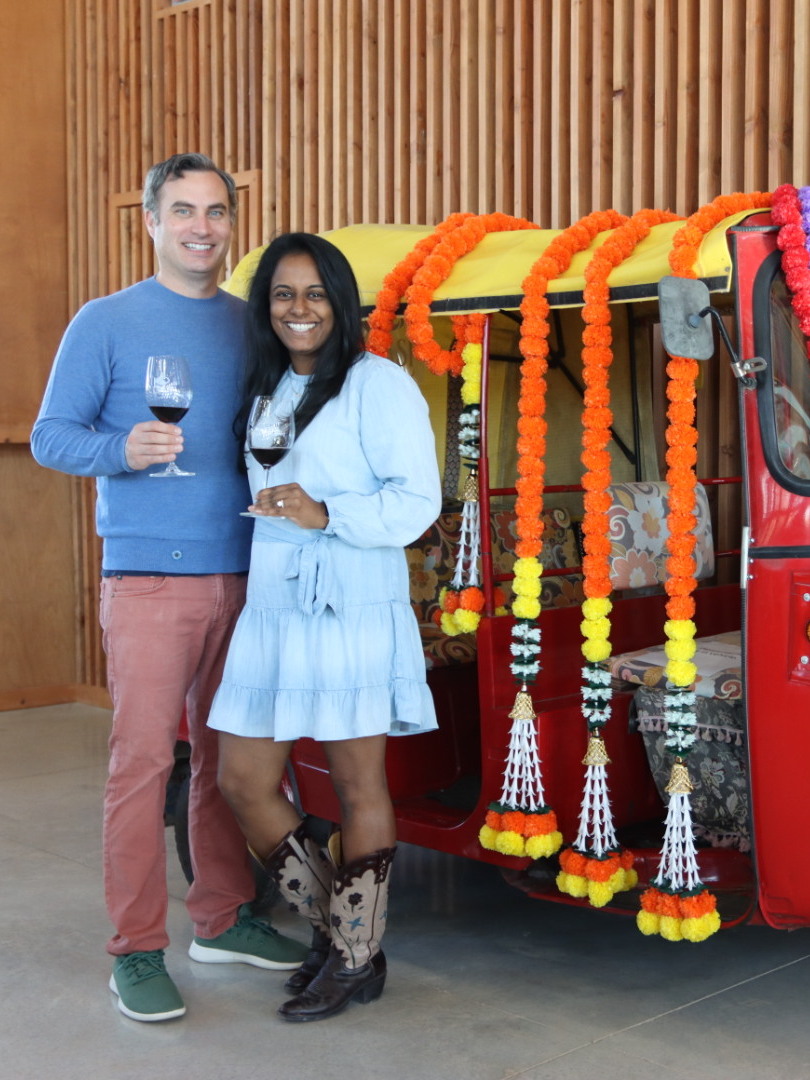February 28, 2025: The Cellar in Late Winter
While the busiest time in the winery is during harvest (~late August until ~mid October for our winery), there’s still a lot that happens in the winery at other times of the year. So what’s happening in our cellar now that we’re transitioning from Winter into Spring?
First and foremost, we’re focused on finishing our whites and rosé wines that we made from the 2024 harvest. The first step is to check for heat stability in the wine. We want to be sure that the wine won’t develop a haze / instability if it’s stored above cellar temperature. Commonly heat stability is achieved through a process known as bentonite fining. Bentonite is a clay that binds to positively charged proteins, causing them to precipitate to the bottom of the tank. We can test how cloudy (turbid) the wine is before and after a heat test to determine the right amount of bentonite fining to do – as we aim to do the bare minimum to achieve stability.
Next we want to cold stabilize these wines. What does that mean? We put the wine in tanks with cooling jackets. These jackets are then connected to a glycol chiller. The chiller is basically like your home air conditioner, but instead of cooling air it’s cooling a glycol / water mixture and pumping that mixture through the jackets of the tanks. This glycol / water mixture can get very cold without freezing, even creating a layer of frost on the outside of the tank, allowing us to drop the temperature of the wine to around 28F (the alcohol in wine keeps it from freezing at this temperature, too). At these temperatures, tartrates will precipitate out of the wine. While these are completely OK to consume and see in a wine (note you typically only see these when chilling a wine in a fridge as the cold temperature causes them to precipitate), most consumers prefer their wines to appear clear. So we use cold stabilization to precipitate the crystals and leave you with a cleaner looking wine.
From here we’re focused on filtering these wines for bottling. Filtering helps the appearance of wine, and can also improve the stability of the wine. We filter to remove any yeast or bacteria that could still be present and cause issues later down the road. Depending on the vintage we’ll filter to different degrees. Filtering can strip some flavor so we’re careful to not overdo it, while still filtering enough to provide microbial stability.
Now that a wine is heat stable, cold stable, and filtered, we can go ahead and get the wine into bottles. We now bottle our wines completely in house, so we roll out our hand bottling line to fill, cork, label, and capsule bottles of wine. Once in the bottle, wines rest for a bit to ensure bottle shock is gone (filtering / bottling / etc. can really affect the short-term characteristics of a wine, so you let the wine rest in bottle to recover).
Outside of finishing white and rosé wines, we monitor our reds that are going through barrel aging. We’ll periodically taste through barrels. There are typically two vintages barrel aging in our cellar at a time. First there’s the most recent vintage – we want to see how the wine is evolving. The older vintage (nearing 18 months in barrel) is getting close to being bottled, so we taste to make final decisions on blending, schedule bottling, etc. Aside from tasting the wine, we go ahead and top all the barrels since we have them open. Topping is done as wine evaporates from barrels as they age in our cellar, and we want the barrels to be full to avoid oxygen contact. Oxygen contact can prematurely age a wine, create an environment that spoilage bacteria thrive in, etc. so we want barrels to be full to best protect the wines.

